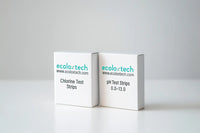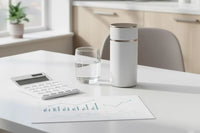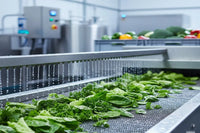There’s a quiet war happening in the world of food plant sanitation.
On one side are traditional chemical systems—bleach, quats, and peracetic acid—wielded by habit and outdated SOPs.
On the other, two technologies stand at the front of the clean-tech revolution: hypochlorous acid (HOCl) and ozone.
Both are powerful. Both are “green.”
Both are capable of killing pathogens at scale.
But only one is safe, scalable, and sustainable enough to replace the toxic sanitation protocols still clinging to the industry like biofilm on a cracked floor tile.
If you’re evaluating advanced disinfection systems, especially for USDA, FDA, or GFSI-compliant facilities, this is the post that lays it all bare.
HOCl vs Ozone. Molecule to molecule. Audit to audit. Let’s break it down.
First: What Are We Comparing?
HOCl (Hypochlorous Acid)
- The molecule your white blood cells use to fight infection
- Produced on-site with water, salt, and electricity
- Used via fogging, spray, dip, or immersion
- EPA, FDA, USDA, NSF approved
- Kills 99.999% of foodborne pathogens
- Safe on skin, eyes, and food contact surfaces
- Requires no rinse
Ozone (O₃)
- A reactive gas made from oxygen using corona discharge or UV light
- Injected into water or released into air in sealed chambers
- Oxidizes and destroys microbes but also breaks down organic matter
- Highly unstable, must be generated on demand
- Harmful to lungs and mucous membranes
- Requires specialized sealed environments and ventilation systems
Killing Power: Both Strong—But One Is Smarter
Let’s start with efficacy.
Both HOCl and ozone have proven 99.999% kill rates (5-log reduction) against:
- Listeria monocytogenes
- Escherichia coli
- Salmonella enterica
- Norovirus
- Campylobacter
- Mold and yeast
- Spoilage organisms
But here’s the catch: how they achieve that kill matters.
Ozone is a blunt-force oxidizer. It reacts violently with anything organic—microbes, but also food, surfaces, equipment gaskets, even your employees’ lungs.
HOCl, on the other hand, selectively targets pathogens while remaining harmless to humans, food, and most surfaces.
HOCl = surgical strike
Ozone = airstrike on the whole village
Safety: The Difference Between Fear and Trust
Ozone Safety Profile:
- Cannot be used in occupied rooms
- Harmful to breathe at even low levels
- OSHA exposure limit = 0.1 ppm over 8 hours
- Requires oxygen monitoring and automated shutdown systems
- Can damage lungs, eyes, mucosa with repeated exposure
Many facilities using ozone must:
- Evacuate areas during treatment
- Seal off spaces
- Delay re-entry for 30–60 minutes after treatment
- Run post-treatment ventilation cycles
And you better hope your air sensors don’t fail.
HOCl Safety Profile:
- Non-toxic
- Non-irritating to eyes or lungs
- No PPE required
- Can be fogged or sprayed in occupied zones
- Safe for use on hands, food contact surfaces, even direct food application
This means your sanitation team stays safe. Your workers don’t need to “evacuate” their own workplace. And your QA department doesn’t lose sleep over accidental exposure.
Usability: What It Actually Looks Like in Practice
Let’s walk through two real-world scenarios.
Scenario A: You Use Ozone
- You have to build an ozone-safe chamber or retrofit your sanitation zones
- You need constant airflow monitoring and timed oxygen resets
- Your team must be trained in ozone-specific safety procedures
- You can’t apply ozone in open production areas during operating hours
- You’ll need secondary sanitation protocols for anything ozone can’t reach
- Total cost = tens of thousands in capital + ongoing safety compliance
Scenario B: You Use HOCl
- You install an EcoloxTech system (wall-mounted or mobile)
- You generate HOCl on-site using salt and water
- You fog rooms, sanitize surfaces, dip produce—all while workers are present
- No PPE needed
- No post-rinse required
- Safe, simple, scalable
Shelf Life, Stability, and Consistency
Ozone is a gas that decays rapidly. Even when dissolved in water, its potency drops within minutes—especially if temperature or pH fluctuates.
That means ozone must be used immediately upon generation.
No storage. No batching. No flexibility.
HOCl, on the other hand, can be:
- Produced fresh daily
- Stored in sealed containers for 7–10 days (depending on conditions)
- Monitored for ppm strength and adjusted with precision
- Used across multiple sanitation zones with standard sprayers and foggers
You get control. You get predictability.
And you don’t waste chemicals—or shut down production—to make them work.
Surface Compatibility and Equipment Longevity
Ozone is corrosive. It eats away at:
-
Rubber seals
-
Electrical connectors
-
Stainless steel (especially in damp zones)
-
Soft plastics
-
Conveyor belts
-
Ventilation gaskets
Replacing ozone-damaged components becomes a recurring maintenance nightmare.
HOCl, by contrast, is:
- pH-neutral
- Non-corrosive
- Safe on all food-safe stainless steels (304, 316), HDPE, polycarbonate, and gaskets
- Trusted in dental clinics, surgical centers, even eye care
The difference?
Ozone makes your equipment flinch.
HOCl makes it shine.
Audit Performance + Compliance Readiness
Once again, HOCl wins.
✅ EPA: Registered for food contact surface disinfection
✅ FDA: GRAS for direct application on produce, poultry, seafood
✅ USDA: Approved in organic processing
✅ NSF: Certified D2 for no-rinse sanitation
✅ Safe to use during production
✅ Clear SOP pathways for SSOP and HACCP plans
Ozone?
⚠️ No-rinse? Sometimes
⚠️ Direct food contact? Maybe, depending on jurisdiction
⚠️ Worker safety? Big red flag
⚠️ Real-time compliance support? Typically outsourced
⚠️ Acceptable in audits? Yes, but with caveats, risk controls, and heavy documentation
Cost Comparison
| Factor | HOCl | Ozone |
|---|---|---|
| Install Cost | Low–Medium | High |
| Operating Cost | Very low (salt + water) | Medium–High (electric + maintenance) |
| PPE Needed | No | Yes |
| Rinse Water Required | None | None (but re-entry delay adds cost) |
| Staff Training Complexity | Low | High |
| Surface Degradation Risk | None | High |
| Downtime for Treatment | None | 30–60 mins per room |
| ROI Timeline | <3 months |
6–12+ months |
Final Verdict: HOCl Wins by a Mile
Let’s not mince words.
If you want a disinfectant that:
-
Kills all major foodborne pathogens
-
Requires no rinse or re-entry delay
-
Is safe for your team, your surfaces, and your food
-
Passes audits with zero resistance
-
Scales from small rooms to full production zones
-
Costs less to operate and maintain
Then you’re not just choosing between HOCl and ozone.
You’re upgrading from one-size-fits-all chemistry to precision sanitation that serves your facility—instead of controlling it.
Want to Compare HOCl and Ozone Side-by-Side With Real Cost + Compliance Data?
📩 Download the HOCl Sanitation Blueprint to access:
-
Kill data charts: Ozone vs. HOCl
-
Safety, compliance, and equipment risk comparisons
-
Case studies from real USDA and GFSI facilities
-
ROI calculator tailored to your plant size
-
Technical SOPs for fogging, spraying, and dip applications





